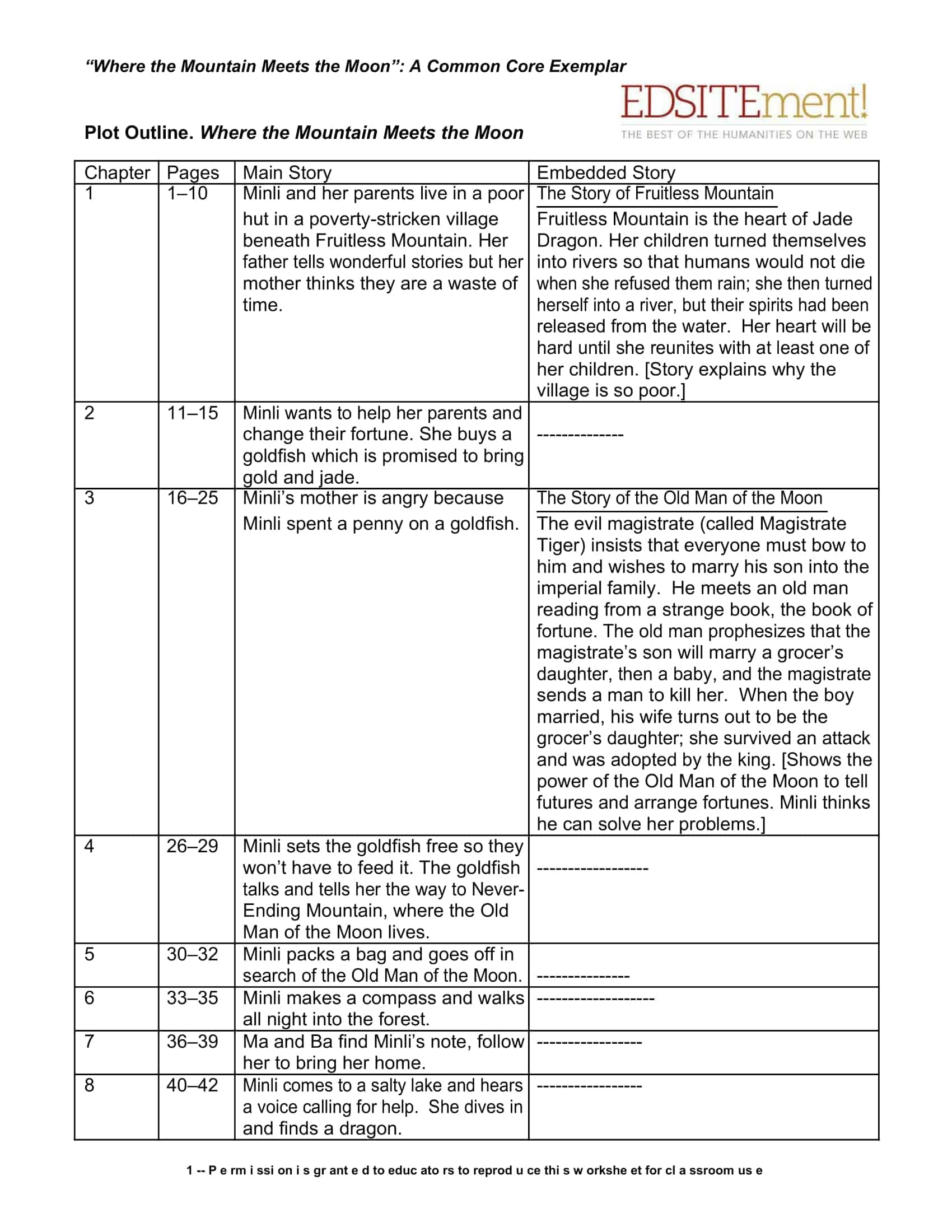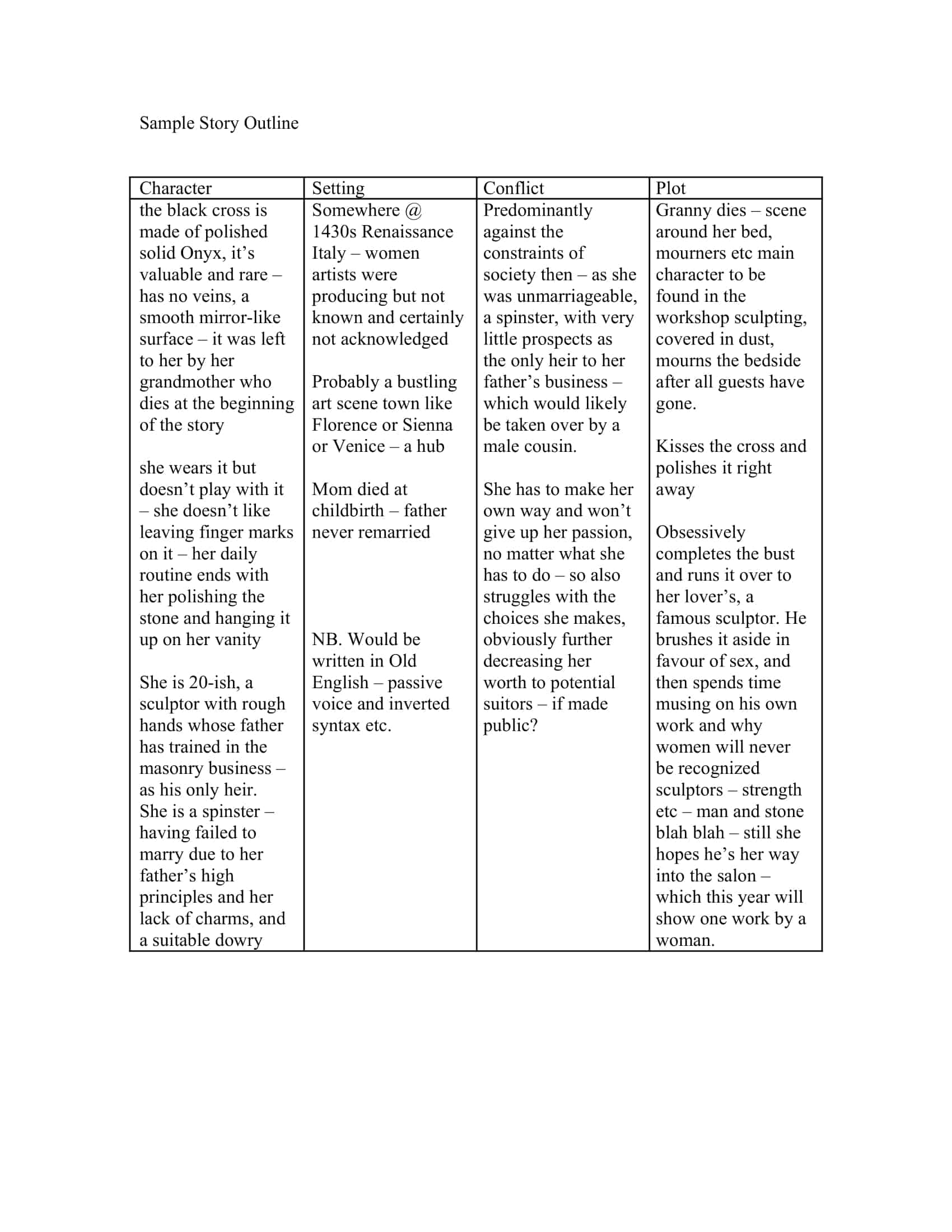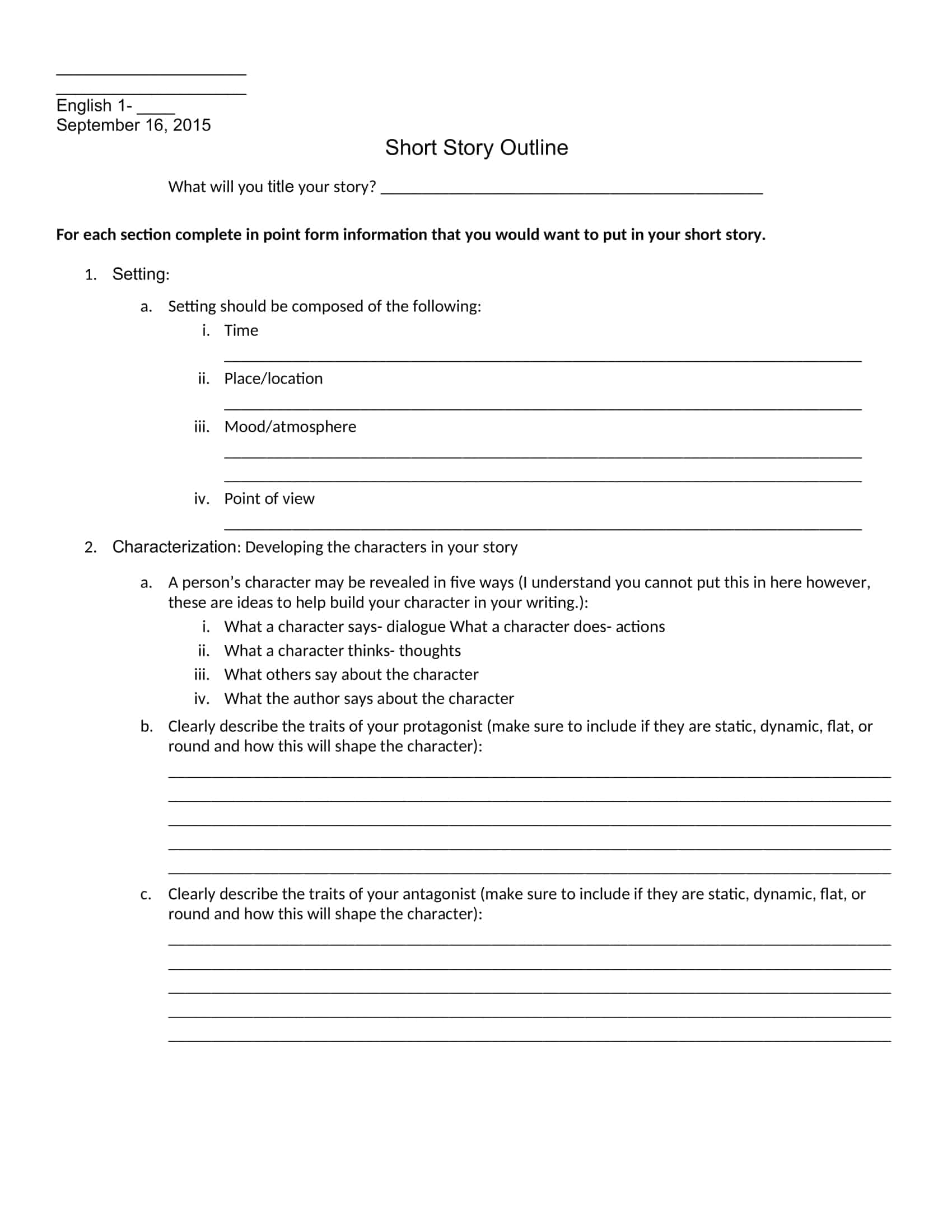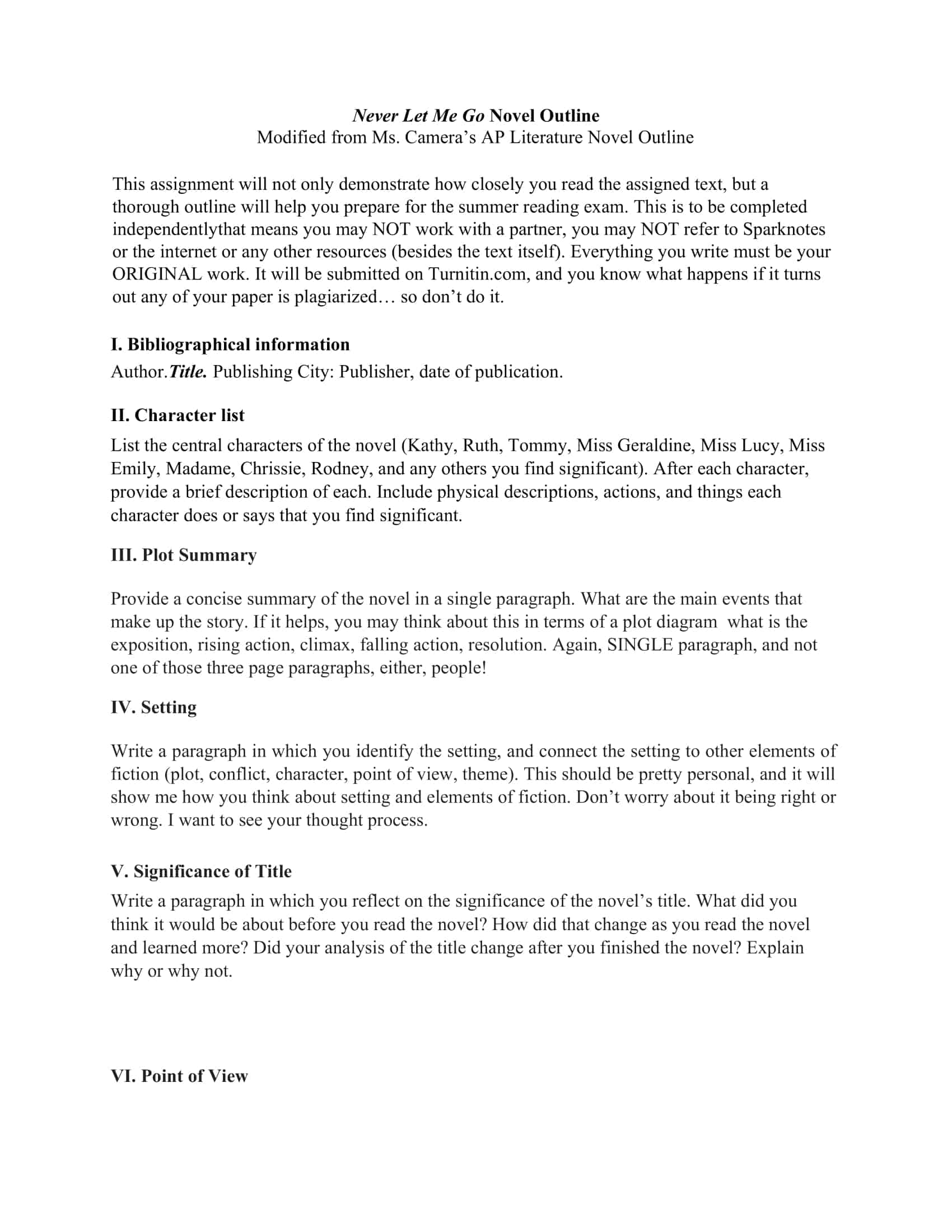A story outline template will help you develop a rough idea of what your story will be like. It should serve as a guide to make it easier for you to draft a storyline that captures the interest of your audience in the early stages without sacrificing the spontaneity and creativity that can only come from an organic approach when writing.
Table of Contents
Why is story outline important?

The word story means many things depending on the context in which it is used. In the beginning, it could be something that summarizes for somebody what happened at work in the past couple of days, or it could be a fictional tale of two people who fell in love during the medieval ages—having a story outline template while writing will serve as your guide to structure your narrative accordingly.
Writing a novel outline template for your future book can help you organize your thoughts and prepare yourself for writing the actual book. Of course, to create a good story outline template, you need to have an idea about the kind of story you want to write.
You can write any type of fiction, but the choice is wide: from novels and memoirs to short stories and novellas. If you want to develop your own novel plot outline template, it’s recommended that you check some interesting sites where you can find free sample outlines and novel plot outlines and plenty of information regarding this craft.
Story Outline Templates
Craft compelling narratives with our comprehensive collection of Story Outline Templates. These customizable and printable templates provide a structured framework for planning and organizing your stories, whether you’re writing a novel, screenplay, or short story. Our templates include sections for outlining key plot points, character development, settings, and story arcs.
By utilizing our Story Outline Templates, you can effectively map out the progression of your story, create engaging plot twists, and ensure a cohesive and satisfying narrative. Whether you’re a seasoned writer or just starting out, our templates offer a valuable tool to streamline your storytelling process, maintain consistency, and bring your ideas to life. Download now and embark on a creative journey, building compelling stories with clarity and purpose using our user-friendly templates.
What are the six types of outlining?
Characters First
The great thing about characters first is that it helps you flesh out an entire cast of characters instead of just focusing on the protagonist (who is usually clear by the time you start outlining). Also, by writing out all your character traits before the actual plotlines and scenes, you can guarantee that one of your characters isn’t pulling a deus ex machina and miraculously saving the day in the end when they were previously unknown.
Beat Sheets
The function of beat sheets, beyond the procedural step of labeling beats, is to act as a reference for the various beats and scenes of the story. When I worked as an editorial assistant on a television talk show, my boss used a beat sheet to ensure we had covered all the necessary topics before taping an episode of the show. Before he would write out that week’s script, he would draw up a new form of the beat sheet, so we knew what to discuss and what pertained to which segment and correspondent.
Researchers have found that ‘efficient’ beat sheets are not necessarily those that label a large number of unique or different beats within the narrative but those that remain economical by reducing the number of words needed to label the beats in question.
Mind Map
A mind map is an overview of your story that uses key details, images, and words to define the relationship between certain elements. It is a tool for all the people who would like to break the complex plot, themes, or characters into a series of smaller pieces. While reading this article, you will be introduced to using this technique in your own writing.
Synopsis
The most common goal of a synopsis is to provide an overview of a long source text. This will often reveal the structure and main points of the text but omit some details. A lot of the summarizing you’ll do in your dissertation will be descriptive, combining description, analysis, evaluation, interpretation, and any other relevant techniques.
Scenes and Sequences
The scene-to-scene outline is the basis of all good screenplays. It’s the foundation that will carry your story from beginning to end. The Scene to Scene Outline is all about understanding the structure and purpose of a script’s individual scenes. Understanding this will help you know what each scene must accomplish regarding its big idea and its specific context. This is all based on your initial premise (logline).
The Skeleton
Much like a human skeleton, this short story template is a bit of an enigma. This is because it forces you to create a story around a series of outlines, which means it may lead you down a path you wouldn’t have normally gone. It’s an interesting concept, so let’s talk a bit more about it.
How to Outline a Novel in 4 Simple Steps
A novel outline template is a useful tool for you to use when you dive into the novel-writing process. It provides guidance and structure when developing your characters, plot, and setting, leading to a better end result.
There are many different methods for writing an outline, but here is my preferred method when writing a detailed outline:
Bookend Method
The bookend method can be used for any genre and applicable for fiction and non-fiction. It’s more practical to start with a short outline of a few pages and then go on to flesh out the details of the genre. Though, this method is perfect for you if you prefer leaving some things to chance and like to have no upfront plan.
In-Depth Outline
In-depth outlines are used by authors who plan on writing in graphic detail. These authors like to have the liberty of penning every little thing in their book. Some even go as far as drawing a timeline and writing major scenes across the entire timeline.
Snowflake Method
The Snowflake Method is a structured writing process that helps authors organize and develop the plot of a novel. Randy Ingermanson, a writing instructor and author, originally developed the method. This structuring technique starts with a one-sentence summary of your story, which then expands into a paragraph, followed by character descriptions and storylines.
Synopsis Outline
The synopsis is essentially the summary of your story, written in expanded form. What is the blurb for your book? The synopsis is for your entire trilogy or novel series. It will essentially tell you where your story will go and provide you with a great writing plan going forward.
How to Write a Story Outline?
Learning the art of creating a story outline can be a complicated thing to do. You will never find it rewarding until you’re able to dive into writing your first novel or short story, but you must pass by the learning stage where it’s best to create story outlines to discover whatever weaknesses you have so that once you start working on your first novel, you know exactly what you’re doing.
As a new writer, the best way to improve your writing is to enter short story competitions. You are immediately put into a situation where you must come up with a short story by a specific date, something you will not be doing every day. This can force you to make decisions on your writing that regular writing might not do for you.
- Choose a main character
- Choose a setting
- Choose a goal
FAQs
How do you write an outline for a story?
To outline a story, list the major plot points, characters, and settings. Break the story into beginning, middle, and end sections. Within each part, note the main events, character introductions, conflicts, resolutions, etc. in chronological order. Write 1-2 sentences summarizing each key scene.
How should a story outline look?
A story outline typically looks like a bulleted or numbered list organized by beginning, middle, end, with key story elements described briefly in sentence fragments. It can also take the form of a table with columns for plot points, characters, settings, etc. The focus is capturing the flow of major events.
What is a story outline template?
A story outline template is a pre-made sample outline containing section headings for beginning, middle, end, and space to enter key story beats and summaries. Some templates have fields for additional elements like character profiles. Templates provide consistent structure to plan and organize the major parts of a story.
How long does it take to make a story outline?
It usually takes 2-5 hours to create a thorough outline for a standard short story or novel, but can take 10+ hours for very complex or in-depth stories. Outlines can be done in one session or built gradually over multiple brainstorming sessions. The length depends on the story complexity and writer’s planning process.














































![Free Printable Roommate Agreement Templates [Word, PDF] 1 Roommate Agreement](https://www.typecalendar.com/wp-content/uploads/2023/06/Roommate-Agreement-150x150.jpg)
![Free Printable Credit Card Authorization Form Templates [PDF, Word, Excel] 2 Credit Card Authorization Form](https://www.typecalendar.com/wp-content/uploads/2023/06/Credit-Card-Authorization-Form-150x150.jpg)
![Free Printable Story Map Templates [Excel, PDF] 1st, 2nd, 5th Grade 3 Story Map](https://www.typecalendar.com/wp-content/uploads/2023/01/Story-Map-150x150.jpg 150w, https://www.typecalendar.com/wp-content/uploads/2023/01/Story-Map-1200x1200.jpg 1200w)
